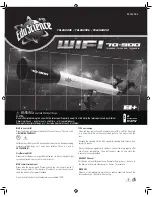
Tipps and Tricks
Marking with luminous paint:
As noted above in the section about assembly it is very helpful to mark the positions oft he
altitude wheels and the trusses. This helps assembling the telescope at night, and keeps collimation issues at a minimum.
There are only a few things that are as frustrating as loosing screws in the grass
– you are spending time driving to a remote
place, and then observation is not possible because a screw just made a escape into the grass and is hiding. For this reason I
also recommend to mark your screws with a patch of luminous paint
– it makes finding lost parts a lot easier, and you are able
to find them without making a lot of light yourself
– which would disturb the night vision of other observers. With time the paint or
the stickers will loose their luminousity
– but this is no problem. I always pack the screws into my pocket – together with my
white flashlight. Then I illuminate the parts inside my pocket with the flashlight for a few seconds
– this reactivates the
luminousity without disturbing other observers.
Image orientation:
You may have noticed that objects appear to be upside down and mirrored in your telescope. This is the
case in almost every astronomical telescope and does not cause any problem during astronomical observations. Because of the
earths rotation all objects seem to drift across the field of view. To compensate this movement you have to move the telescope
smoothly and slowly. The higher the magnification the more accurate this tracking movement has to be. Another solution is to
place the object on the eastern rim of the field of view and let it drift across the field, then reposition it on the eastern rim again.
However
– this method only works with good eyepieces that are delivering a sharp image up to the edge of the field.
Vibrations:
Try to avoid touching the eyepiece during observations. Touching the eyepiece and the slight shiver of the hand will
cause unsteady views.
Night vision:
Give your eyes some time to adapt to the darkness. This takes about 20-30 minutes after an exposure to a bright
light
– even if it is a short exposure. Use a dim light with a red filter to read star charts or draw objects – dim red light does not
influence the dark adaption very much.
Observations throuth a window are very disadvantagoues (even if the window is open). The light that is gathered by
the telescope has to pass a lot of air and glass layers, causing severe image deterioration.
Planets and other objects that are close tot he horizon are severely influenced by air movement and absorbance. It is much
better to time your observations in a way that those objects are close to the meridian, so that they are on their highest position
possible. If the image is dim or moving fast, use a smaller magnification. Using too much magnification is a mistake that is made
very often by beginners.
Warm Clothing:
Even in the summer the nights may get very cold during clear nights, especially on the mountains. Always
remember to bring warm clothing like thick jackets, beanies, gloves, winter shoes and thick socks
– even if your were sweating
during the day. It is hard to enjoy even the best night when you are freezing!
Explore youre observing site during the day:
The ideal site should be far of frequently used streets and other light sources
that would prevent your eyes to become dark adapted. Keep in mind that it is likely to get foggy in the vicinity of open water,
such as river valleys or lakes. The ground should be solid and relatively flat. You can observe in the city, but try to get to a place
some distance away, where you can see the milky way if possible. You can get really good conditions as close as 50 km outside
of cities.
An old astronomers quote says: “ you cannot really replace a dark skie by anything than a darker sky”
Calculating magnification
The magnification that a telescope gives you at the sky is determined by two factors: The focal length of the telescope and the
focal length of the eyepiece. You will find the focal length of almost all eyepieces written on the eyepiece body..
The focal length of the 10
” Dobson = 1270 mm.
The focal length of the 12
” Dobson = 1525 mm.
The focal length of the 16
” Dobson = 1826 mm.
The focal length of the 20
” Dobson = 2032 mm.
The magnification is changed by changing the eyepiece.
The magnification is determined by the following formula:
Magnification. = telescope focal length/eyepiece focal length
For example a 12
” dobson and a 24mm eyepiece:
Magnification. = 1525mm/24mm = 64x
The eyepiece type, like Modified Achromatic, Plössl or Super Plössl, does not have any influence on the magnification, but
determines other optical properties like apparent field, cromatic error correction an flatness oft he field of view.
The maximum usable magnification is about 2 times the diameter of the aperture in mm (at 12
”=305 mm for example about.
600x). However, in nights of bad to average seeing much lower magnifications will produce a more detailed and steadier image.
High magnifications should only be used during periods of extremely steady air on special objects, like double stars. When you
are starting to observe a object, always start with a low magnification. Then center the object in the field of view and focus with
care. Now you can try a higher magnification. When the image is becoming fuzzy or is moving, go back to the last magnification.
Atmosphere
– and thus seeing conditions – is always changing. Please notice that a sharp image at a low magnification will
show you more than a over magnified fuzzy view.
























